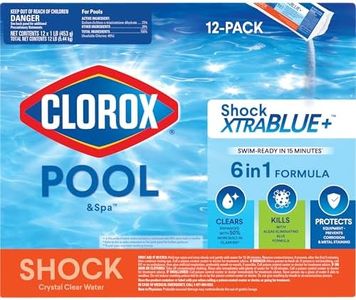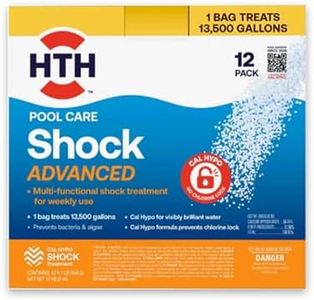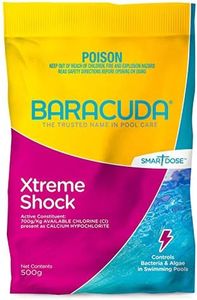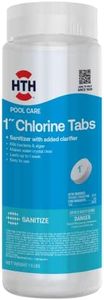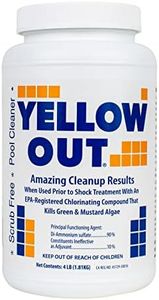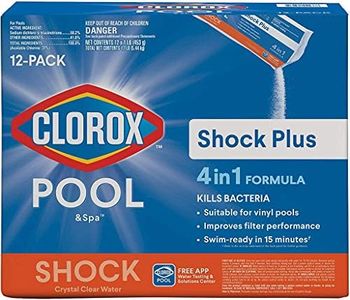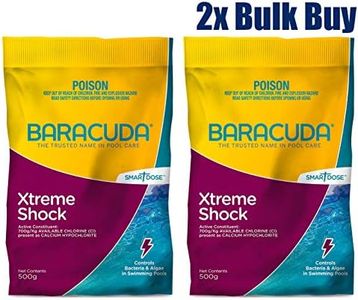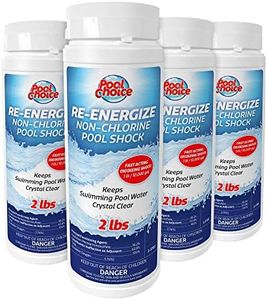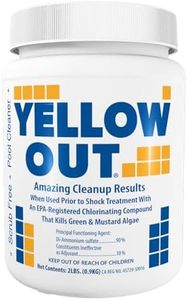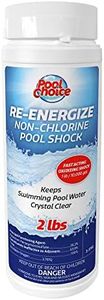We Use CookiesWe use cookies to enhance the security, performance,
functionality and for analytical and promotional activities. By continuing to browse this site you
are agreeing to our privacy policy
10 Best Vinyl Pool Shocks
From leading brands and best sellers available on the web.Buying Guide for the Best Vinyl Pool Shocks
When shopping for a pool shock for a vinyl pool, it’s important to understand how these products keep your water clean and safe. Pool shocks are chemicals used to quickly raise the level of chlorine or other sanitizers, killing bacteria and breaking down organic matter. However, since vinyl pool liners can be sensitive to some chemicals, you’ll need to choose a shock that’s both effective and gentle enough to avoid damaging your pool liner. By understanding key specs, you can find a product that suits your pool’s specific needs and protects your investment.Type of Shock (Chlorine vs. Non-Chlorine)Pool shocks generally come in two main varieties: chlorine-based and non-chlorine (oxygen-based or potassium monopersulfate). Chlorine shocks are strong and effective at sanitizing, but they can sometimes be harsh on vinyl liners if not dissolved properly. Non-chlorine shocks are gentler on pool liners and useful for routine maintenance but may not kill algae as well as chlorine. If your main goal is routine cleaning, a non-chlorine shock may be best; for severe contamination or algae, a chlorine shock is often more effective. Always check the label to see if the product is labeled as safe for vinyl pools.
Dissolubility and Form (Granular vs. Liquid)The form of the pool shock—granular or liquid—affects how easily the product mixes into the water. Granular shocks can leave particles that might settle on the vinyl liner and cause bleaching if not pre-dissolved. Liquid shocks dissolve instantly and are gentler for vinyl but may be less concentrated. If you use granular shock, it’s better to dissolve it in a bucket of pool water before adding it to the pool, especially for vinyl pools. Choose the form that matches your comfort with application and that minimizes the risk of damaging the liner.
Active Ingredient ConcentrationThis spec refers to how much of the main sanitizing chemical is present in the shock. Higher concentration shocks act faster and require less product, but can be more aggressive, especially on sensitive vinyl liners. Lower concentrations are gentler but may need more frequent application. Check the label for specifics like percentage of sodium dichlor, calcium hypochlorite, or potassium monopersulfate. For vinyl pools, a moderate concentration is often ideal—powerful enough to sanitize, but not so strong that it risks fading or damaging your liner.
Calcium ContentSome shocks, like calcium hypochlorite, add calcium to your water. Vinyl pools do not benefit from high calcium levels, as excess calcium can lead to scaling and cloudy water. If you already have hard water or want to maintain a certain water balance, check for shocks labeled ‘calcium-free’ or ones with low calcium content—these are appropriate for vinyl pools. Avoiding extra calcium will help prolong both the life of your pool liner and your pool’s surfaces.
Application Instructions and Safety for Vinyl PoolsAlways ensure the shock is labeled as safe for use with vinyl pools. Some strong shocks can bleach or damage vinyl if applied incorrectly. Instructions matter—not all products are meant to be added directly to the pool. Following instructions carefully and pre-dissolving when suggested is extra important for maintaining vinyl pool health. Your convenience and confidence in following the process should guide your choice.
